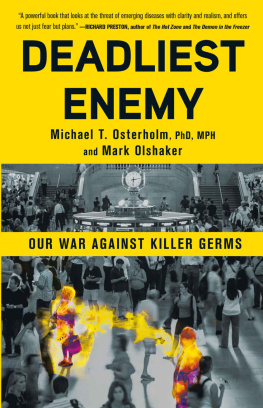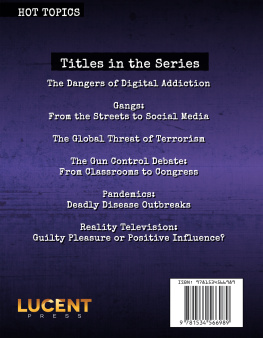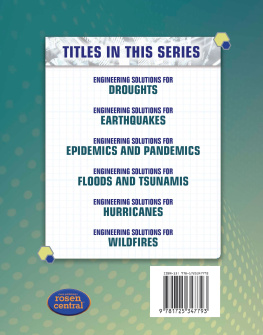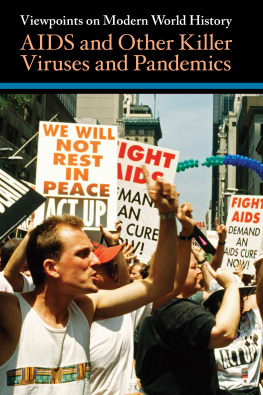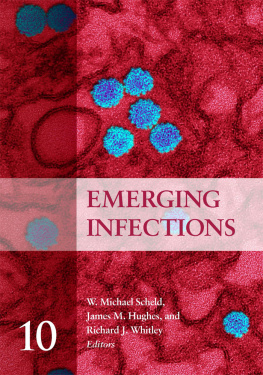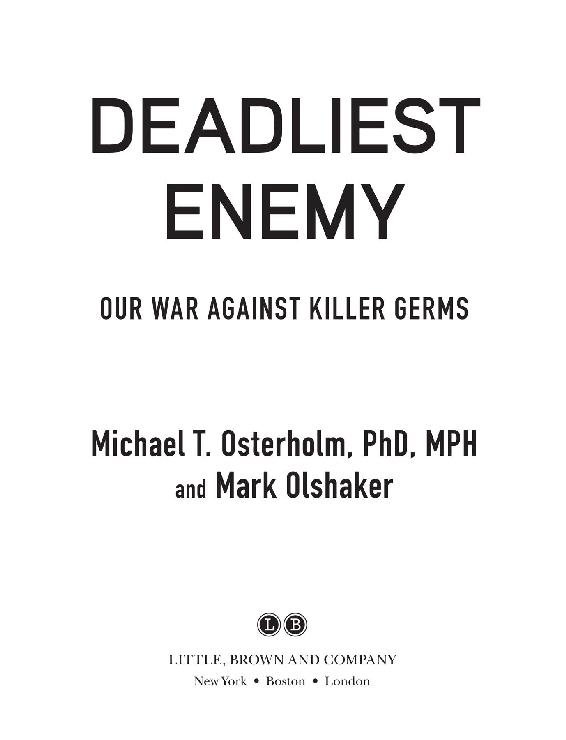Copyright 2017 by Michael T. Osterholm PhD, MPH, and Mark Olshaker
Cover design by Neil Alexander Heacox
Cover photograph by Diego Salles / Getty Images
Cover copyright 2017 by Hachette Book Group, Inc.
Author photograph by Chantal Lavine Photography
Hachette Book Group supports the right to free expression and the value of copyright. The purpose of copyright is to encourage writers and artists to produce the creative works that enrich our culture.
The scanning, uploading, and distribution of this book without permission is a theft of the authors intellectual property. If you would like permission to use material from the book (other than for review purposes), please contact permissions@hbgusa.com. Thank you for your support of the authors rights.
Little, Brown and Company
Hachette Book Group
1290 Avenue of the Americas, New York, NY 10104
littlebrown.com
twitter.com/littlebrown
facebook.com/littlebrownandcompany
First ebook edition: March 2017
Little, Brown and Company is a division of Hachette Book Group, Inc. The Little, Brown name and logo are trademarks of Hachette Book Group, Inc.
The Hachette Speakers Bureau provides a wide range of authors for speaking events. To find out more, go to www.hachettespeakersbureau.com or call (866) 376-6591.
The publisher is not responsible for websites (or their content) that are not owned by the publisher.
ISBN 978-0-316-34368-8
E3-20170211-JV-PC
Contents
Navigation
To the three people who uniquely have influenced my path in life with faith and love. In their own ways, each has taught me to learn from my yesterdays and today and to dream about a better tomorrow:
The late Laverne Keettel Hull, who gave me the road map of life when I was a young boy;
David Doc Roslien, who has inspired me for more than forty-five years to dream, using the confluence of science and policy as my North Star;
Dr. Kristine Moore, without whose professional support and counsel I would not be where I am today.
M ICHAEL O STERHOLM
To my brother, Dr. Jonathan S. Olshaker, who has devoted his life to the front lines of everything were fighting for, with love and admiration.
M ARK O LSHAKER
Humanity has but three great enemies: fever, famine and war; of these by far the greatest, by far the most terrible, is fever.
S IR W ILLIAM O SLER , MD
A good hockey player plays where the puck is. A great hockey player plays where the puck is going to be.
A TTRIBUTED TO W AYNE G RETZKY
When I was the state epidemiologist of Minnesota, a few people in the media started calling me Bad News Mike because often when public officials or corporate leaders got a call from me, I was unlikely to tell them anything they wanted to hear. In a story with that title by Kermit Pattison in Mpls St Paul magazine, the subhead read: Headstrong and outspoken, the states epidemiologist insists hes only a messenger from the germ front. Whatever he is, the message isnt good.
Well, I dont know about the headstrong charge, but I certainly have to plead guilty to being outspoken. Thats because I believe in what I call consequential epidemiology. That is, by attempting to change what could happen if we dont act, we can positively alter the course of history, rather than merely record and explain it retrospectively. Because of the accomplishments in the 1960s and 1970s of two of the giants of public health, Drs. Bill Foege and the late D. A. Henderson, aided by literally thousands of others, countless millions yet unborn will be spared the devastation of smallpox. Opportunities for such life-altering good are still out there, if we only recognize them and have the collective will to act.
This book results from my participation, observations, concerns, outbreak investigations, studies, programs, and policy development on the front lines of the major public health issues of our time. They involve toxic shock syndrome, AIDS, SARS, antibiotic resistance, foodborne diseases, vaccine-preventable diseases, bioterrorism, zoonotic diseases (those transmitted from or to animals and humans) including Ebola, and vector-borne diseases (those transmitted by mosquitoes, ticks, and flies, such as dengue and Zika viruses). Each experience or encounterlocal, regional, national, or internationalhas informed and shaped my thinking, each has taught me a critical lesson about how we deal with our deadliest enemy, and each has focused the lens through which I approach public health.
Because, in fact, infectious disease is the deadliest enemy faced by all of humankind. True, infection is far from the only type of illness that affects each of us, but it is the only type that affects us collectively, and sometimes on a mass scale. Heart disease, cancer, even Alzheimers, can have devastating individual effects, and research leading to cures is laudable. But these diseases dont really have the potential to alter the day-to-day functioning of society, halt travel, trade, and industry, or foster political instability.
If there is any particular theme to my career, it has been connecting disparate dots of information and making them into a coherent line to the future. For example, I both wrote and lectured as early as 2014 that the appearance of the Zika virus in the Americas was just a matter of time. Before a doubting professional audience at the National Academy of Medicine in 2015, I predicted that MERS would soon appear in a major city outside the Middle East. (It did, in Seoul, South Korea, just months later.)
I dont claim any unique skills. Foreseeing issues and potential threats should be a matter of standard practice in public health.
When I established CIDRAP, the Center for Infectious Disease Research and Policy that I now head at the University of Minnesota, I was mindful of the fact that without policy, research has nowhere to go. Another way of saying this is that we tend to go from crisis to crisis without ever anticipating them or finishing the job in the end.
Science and policy must intersect to be effective. Therefore, throughout this book, we will seldom talk about realized or needed advances in the science of disease prevention without always giving equal consideration to what to do with those advances.
What we aim to give you here is a new paradigm for considering the threats posed by infectious disease outbreaks in the twenty-first century. While we will deal with the broad range of communicable illness, we will concentrate on identifying and exploring those maladies with the potential to disrupt the social, political, economic, emotional, or existential well-being of large regions, or even the entire planet. And while morbidity and mortality are certainly prime considerations, they are not the only ones. The current reality is that a few confirmed cases of smallpox anywhere in the world would create more sheer panic than do many thousands of malaria deaths in Africa alone.
That is, we dont always make rational distinctions between what is likely to kill us and what is likely to hurt us, scare us, or simply make us uncomfortable. As a result, we dont always make rational decisions about where to put our resources, where to direct our policy, and, frankly, where to direct our fear. As we write this, much of the Western world is greatly worried by the spread of Zika virus and its association with microcephaly, other birth defects, and Guillain-Barr syndrome. Yet over the past few years, dengue virus, which is spread by the very same mosquito, has killed far more people in the same region with hardly a blip on the public radar. Why? Probably because there are few situations as dramatic and horrifying as babies being born with small heads and facing uncertain lives of disability. It is every parents worst nightmare.

